Lentinellus ursinus in three times (BEAR LENTINUS)
The life cycle of living beings can sometimes be short, depending on the species. The life cycle of some plant and animal species is subject to climatic seasons. Fungi are an example of this.
Today I want to share some pics of the evolution through time of a white wood mushroom known as Lentinellus ursinus. I named this collection of pics "Lentinellus ursinus in three times" (birth, heyday, and fall).
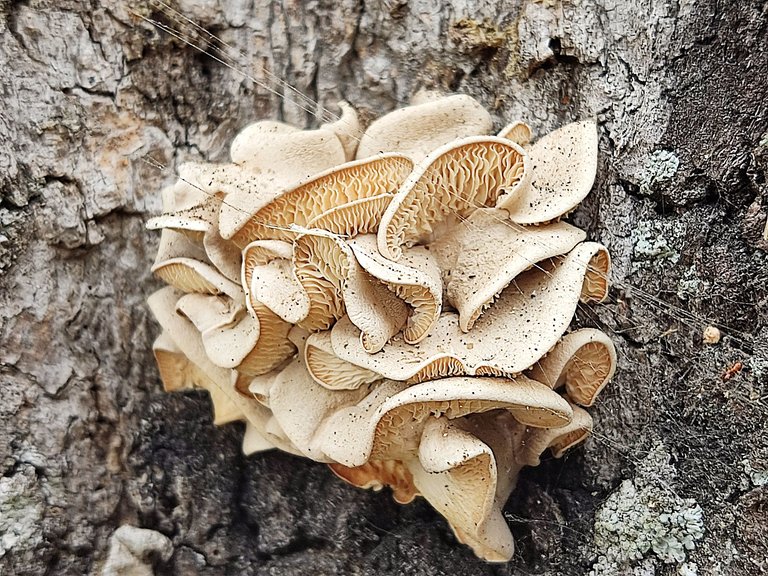

In the genus Lentinus, there are more than one species. The species Lentinellus ursinus can be found distributed in tropical and subtropical climates. Areas where there is a constant temperature around 18ºC and long periods of drought alternate with short periods of abundant rain. Recognizing this species is difficult because it is often confused with Lentinellus vulpinus.
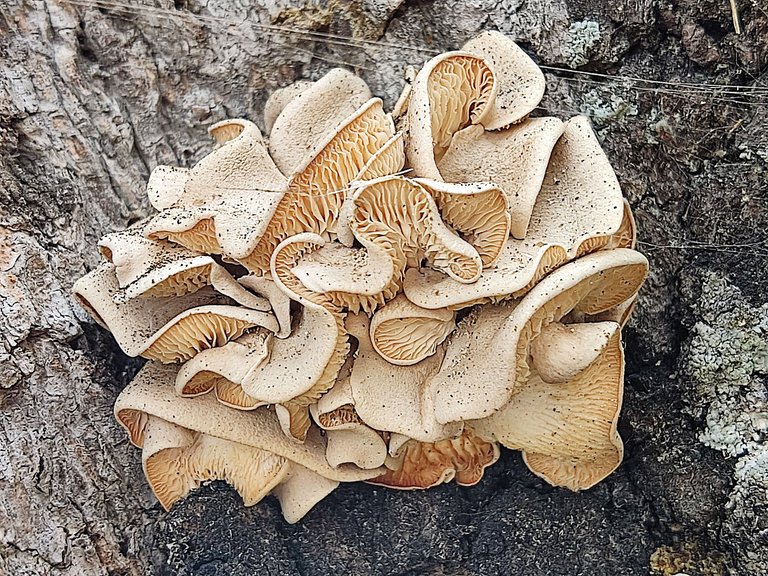
| Taxonomic Category | Rating |
|---|---|
| Kingdom | Fungi |
| Phylum | Basidiomycota |
| Class | Agaricomycetes |
| Order | Russulales |
| Family | Lentinellaceae |
| Subfamily | Auriscalpiaceae |
| Genus | Lentinellus |
| Species | L. ursinus |

In the forest, there are many trees whose bark has already died, but they are the perfect substrate for some species of mushrooms to grow. In my locality when the rainy season ends is when mushroom sprouts can be best appreciated on the trunks of the trees.
At the beginning of November, I made this wonderful find of Lentinellus ursinus. I was able to observe how many specimens of this beautiful species were born. It gave me the idea to follow its evolution through time. I was able to capture through 3 months (November to January) its transformation.
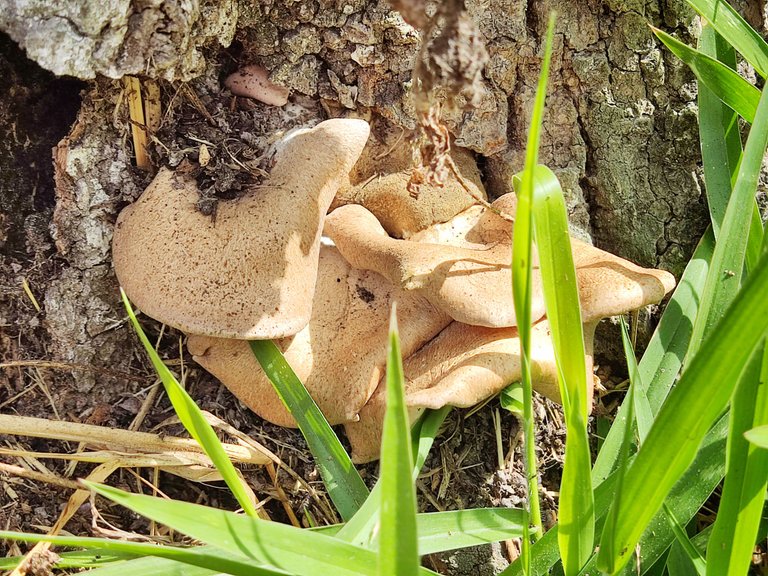
The abundant rains left a lot of humidity in the forest, and a temperature close to 18ºC, which together, with less intense sunlight than in the summer (and other factors), combined perfectly so that several clusters of Lentinellus ursinus were born on a single trunk.
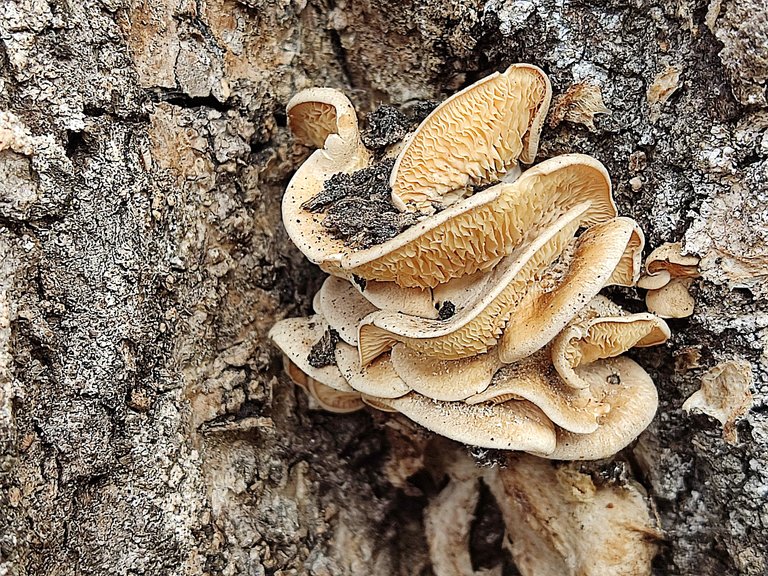
Depending on the space where they develop on the trunk, these fungi can grow in curious clusters. This form is due to the three types of hyphae that form their cap (generative, skeletal, and oleiferae) (1). These hyphae, when intertwined, give way to curious undulations.
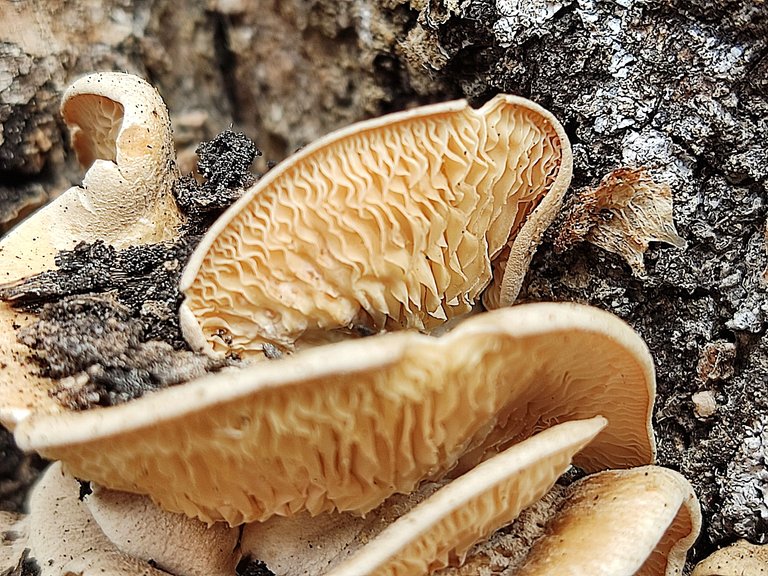
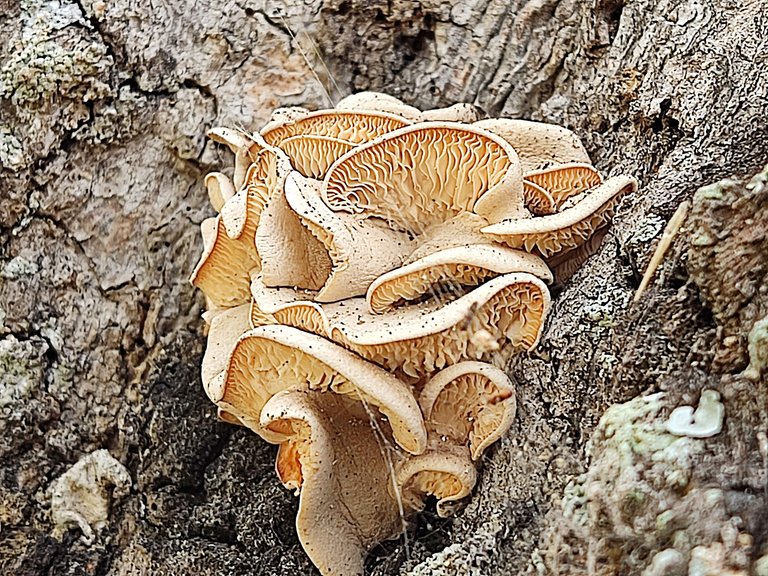
Others, on the contrary, grow in wider and flatter places on the bark of the trunk, which favors its body to extend like a large ledge in sections.
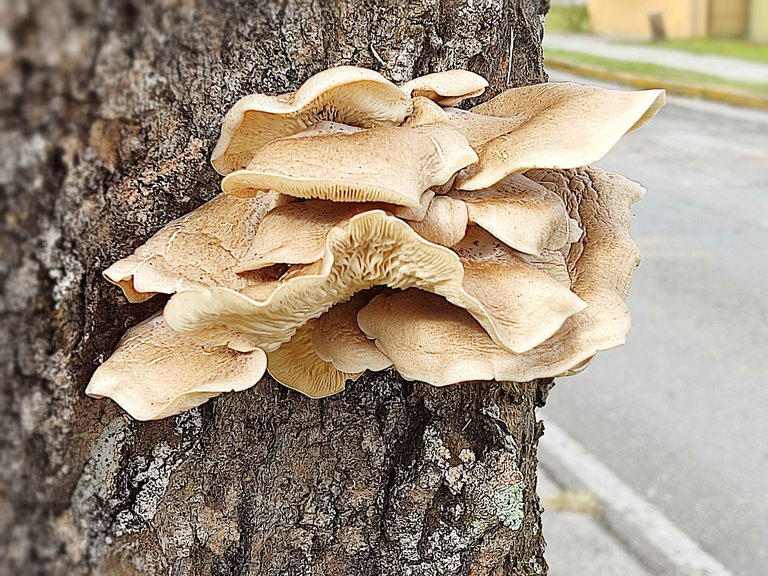
Some adopt whimsical shapes, without symmetry but beautiful.
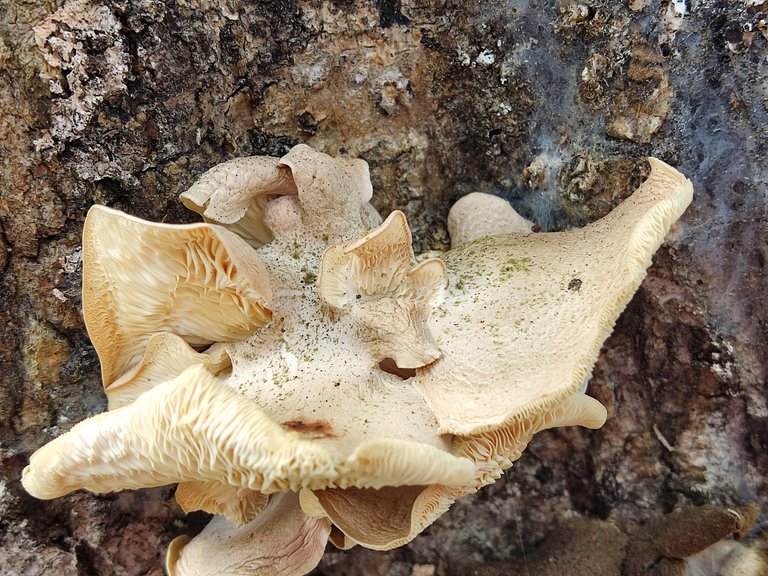
When mushrooms are in the initial stage of growth, they look lumpy and fleshy. Their margins are thick. However, this fleshy appearance is due to the moisture content in their cells, but their texture to the touch is hard, like a cork. They are not edible due to their excessive bitter and pungent taste as they are abundant in sesquiterpenes (essential oils) (2). They are not edible, even for herbivorous animals.
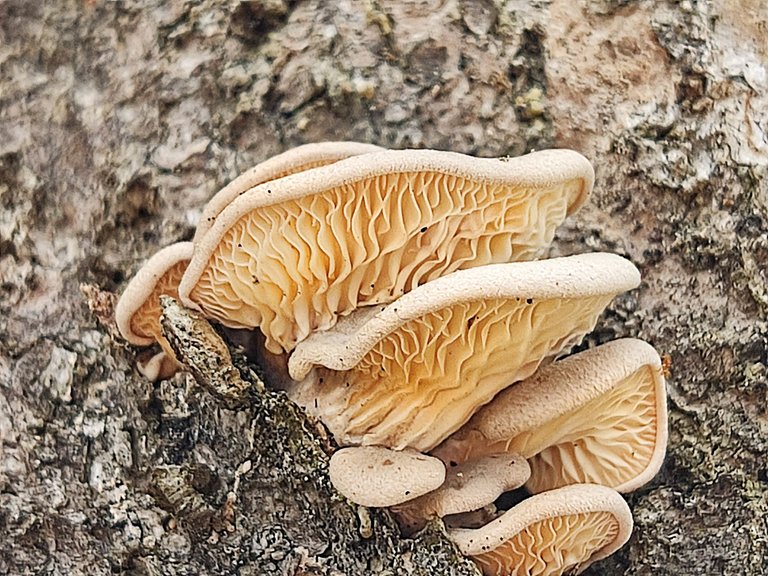

By mid-December, many Lentinellus ursinus specimens exhibited a broad, fully developed cap. The color had changed from cream to beige. It was a slightly more intense color.
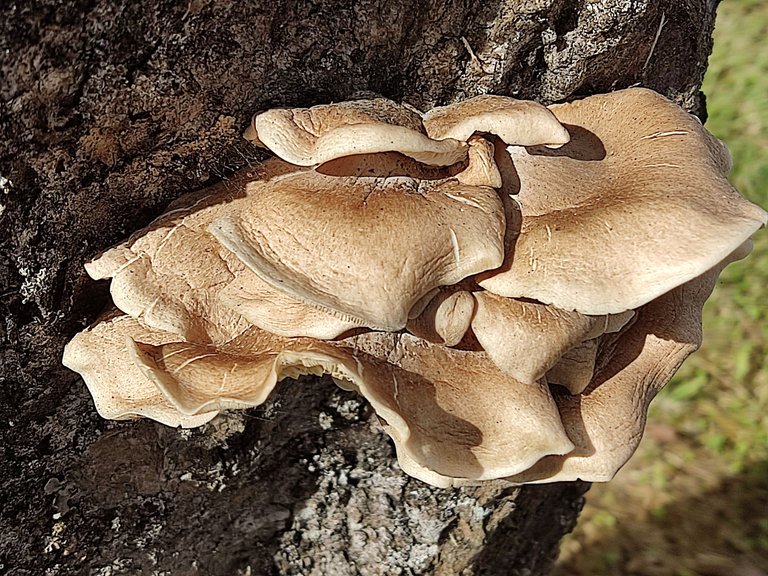
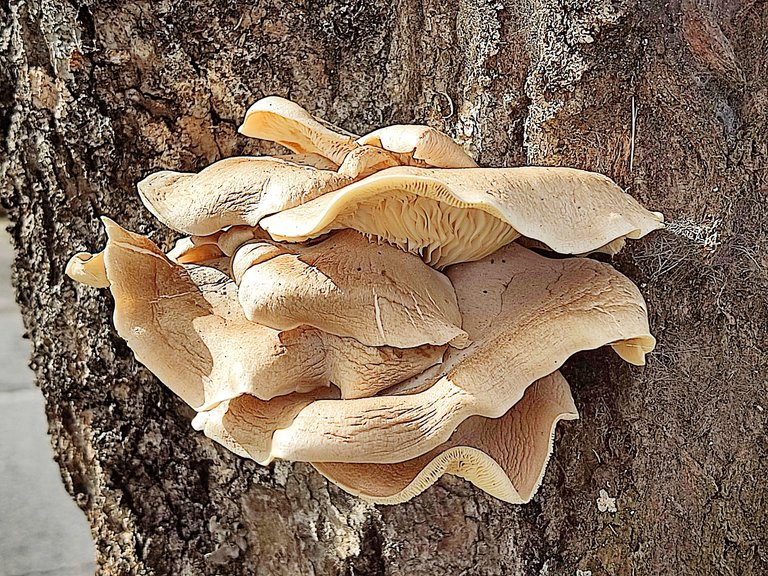
Its lamellae look like infinite grooves. They are perfect folds giving the appearance of a natural fan.
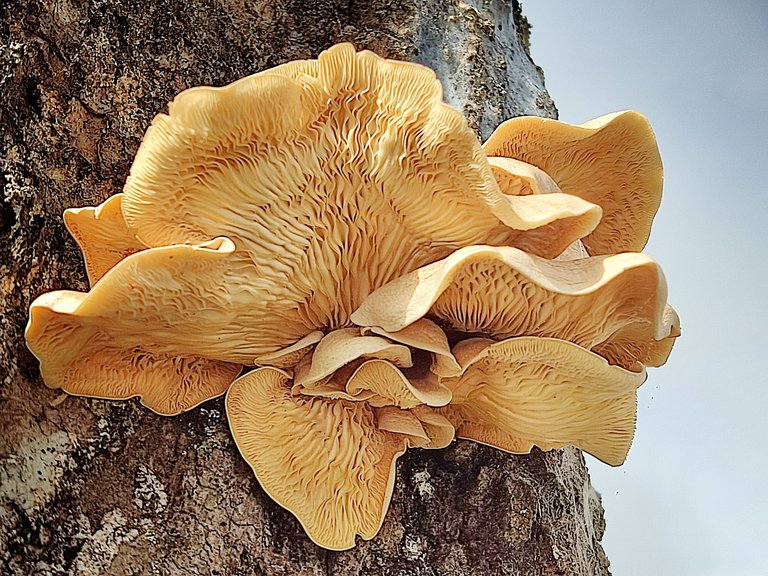
If you look carefully, the edges of this mushroom are thin. They are no longer thick and fleshy as they were a month ago. The fleshy appearance is only seen in the lamellae area.
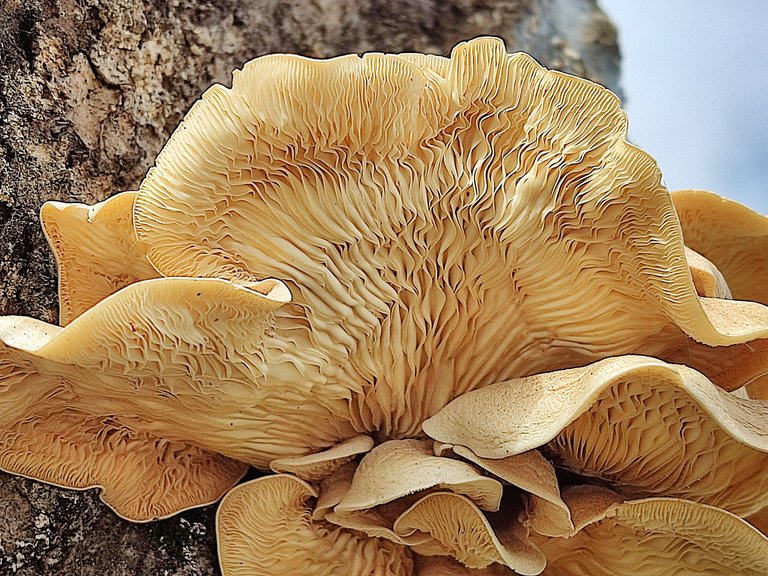

Over time, the caps of the Lentinellus ursinus specimens took on a brown coloration, and molds grew on them, giving them a powdery appearance.
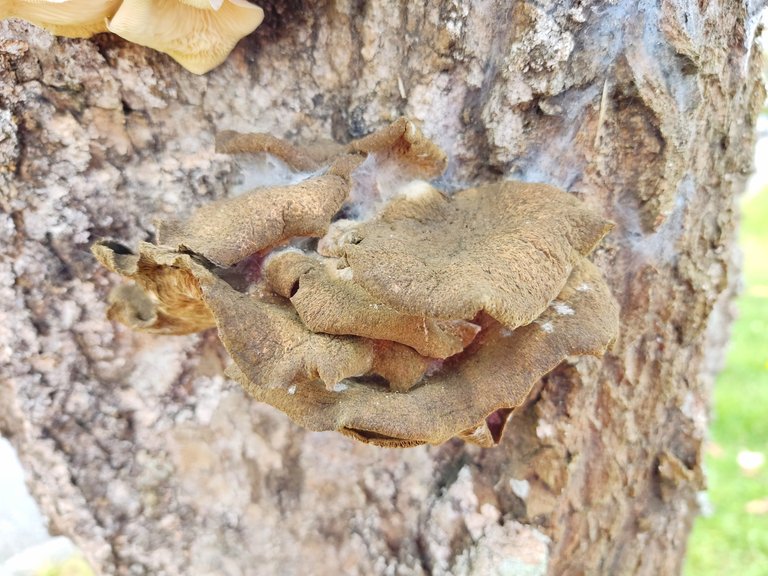
The entire structure of these mushrooms lost its moisture, and their firmness began to fade.
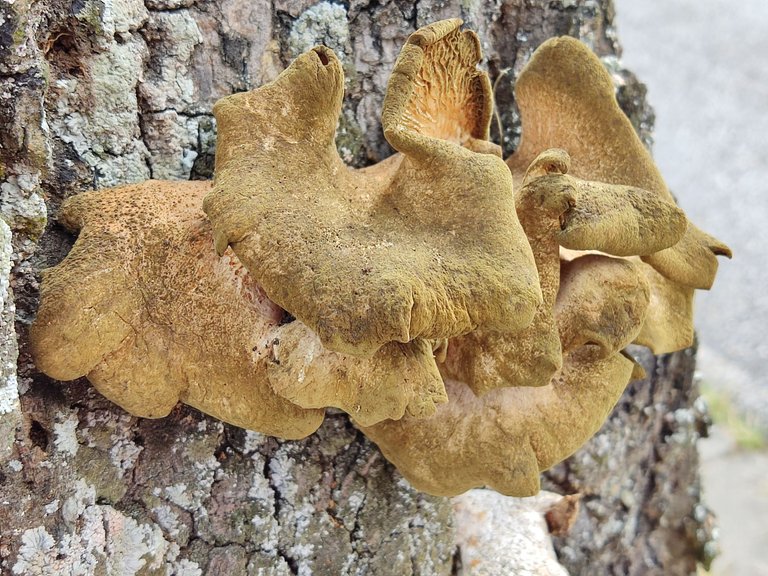
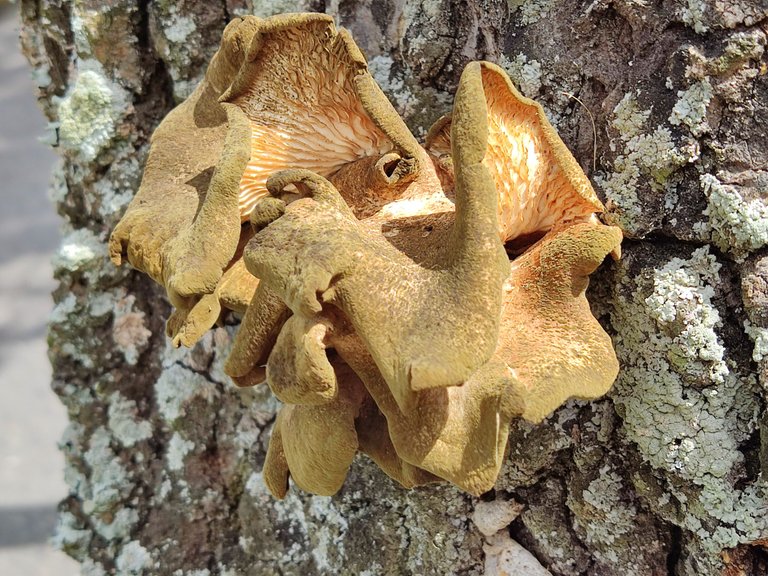
In some specimens, the lamellae had transformed into brown partitions as if they were dry threads.
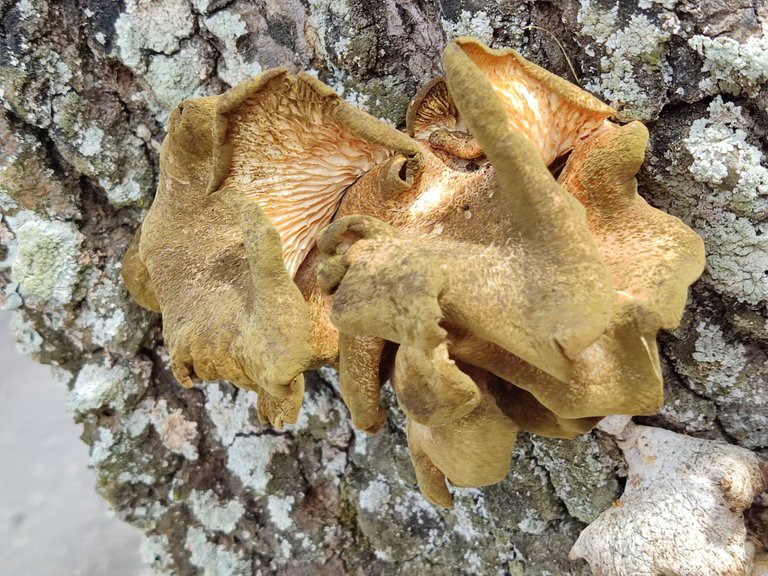
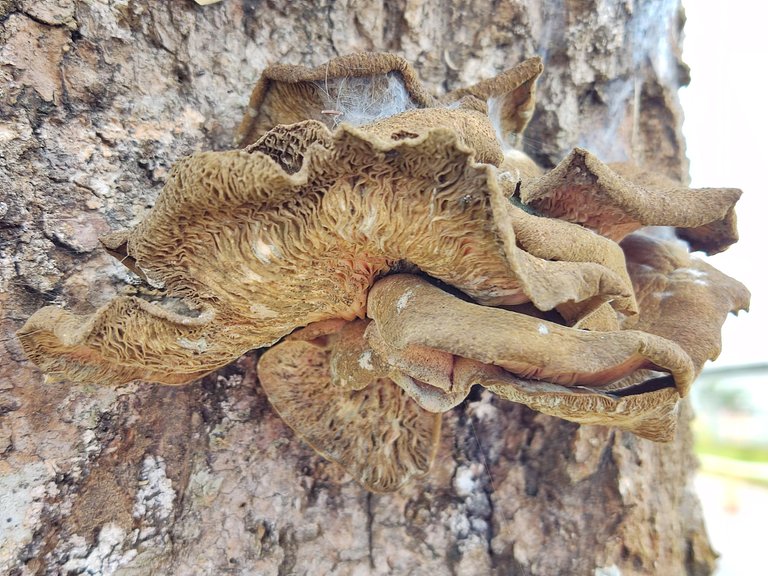
It was evident that the end of the life cycle of these mushrooms was near.
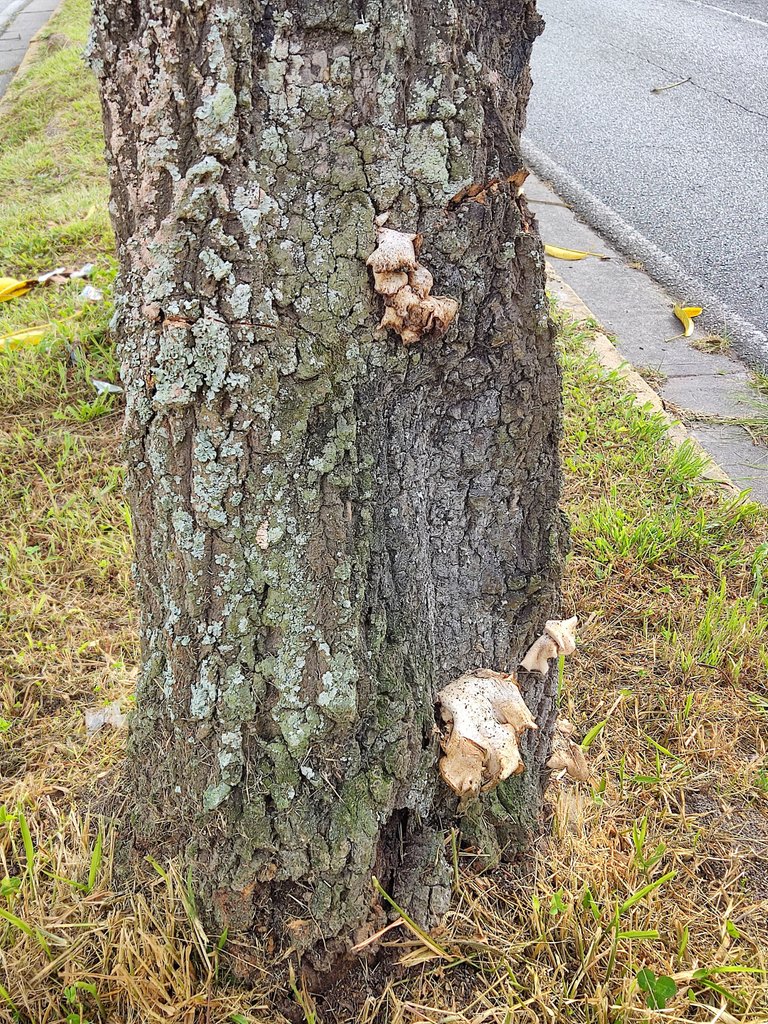
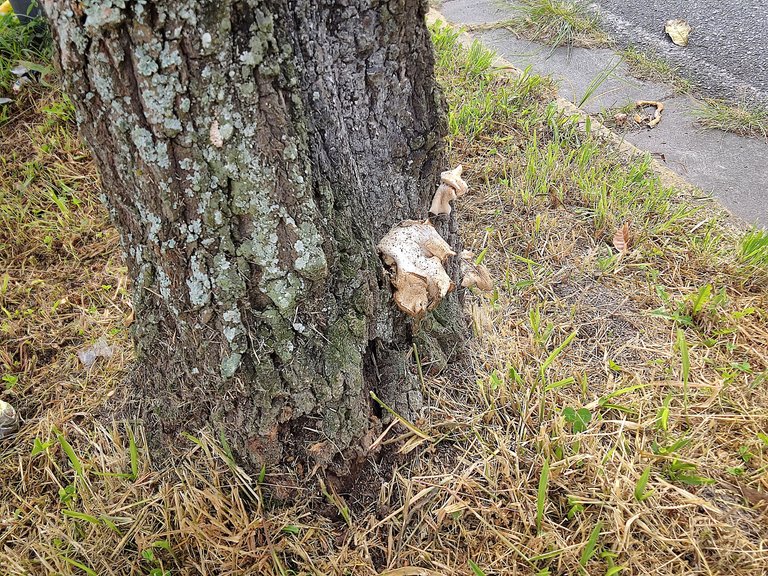
These last pics were taken at the end of January. Many of these dried mushrooms folded back on themselves against the trunk.

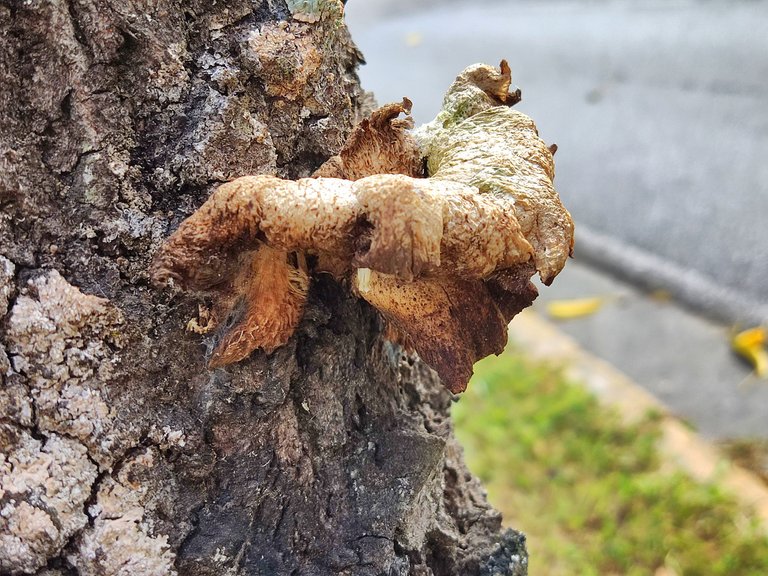
It is impressive to be able to appreciate the complete metamorphosis of these mushrooms. Both their appearance and structure are different from a couple of months ago.
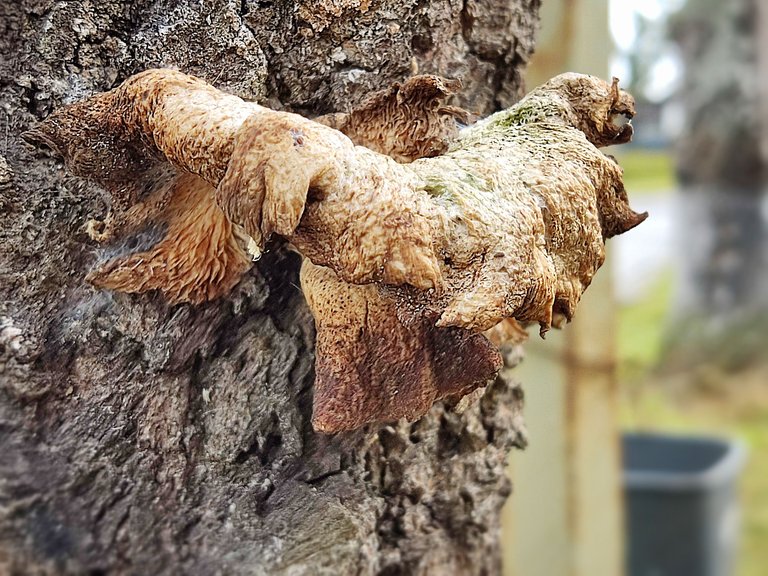
Little by little, these mushrooms seem to merge with the bark of the trunk that once gave them life. At first glance, they seem to transform into inert matter. Nothing could be further from their final destiny! They will be the substrate for another saprophytic species that environmental conditions allow to grow on the rotten bark of this tree. In this way, these mushrooms that once looked splendid will be part of the life cycle of another living being.
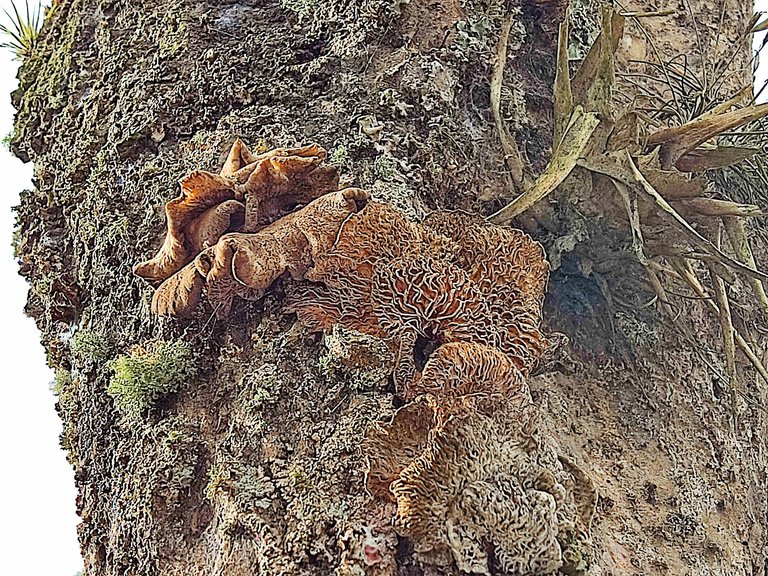

Interesting links
(1) El mundo microscópico de los hongos
(2) Three New Heptelidic Acid Derivatives from the Culture of Mushroom Lentinellus ursinus
Lentinellus ursinus & L. vulpinus make their first recorded appearance in Epping Forest

All images are property of the author
(Camera cell phone: POCO X3 Pro, Xiaomi)


https://twitter.com/252821528/status/1622354745338757122
The rewards earned on this comment will go directly to the people( @chaodietas ) sharing the post on Twitter as long as they are registered with @poshtoken. Sign up at https://hiveposh.com.
Thanks for your contribution to the STEMsocial community. Feel free to join us on discord to get to know the rest of us!
Please consider delegating to the @stemsocial account (85% of the curation rewards are returned).
You may also include @stemsocial as a beneficiary of the rewards of this post to get a stronger support.
Thank you so much. I appreciate your support!
Waw, it's a very unique mushroom, the picture you shared also looks very beautiful
Hello @roronoa46,
When I found the trunk with the specimens of this mushroom I could not believe those nice shapes they had. Some in the form of bouquets and others as shelves. It was a pleasant surprise to discover them.
Thank you very much for your kind words and for visiting my post!
Yes, It is indeed a great fortune, nature always gives unexpected surprises
Oh yeah 😃
I appreciate your work and your post has been manually curated by Botanic team @oscurity on behalf of Amazing Nature Community. Keep up the good work!
Thank you very much for your appreciation and words of encouragement.
thanks for sharing
We appreciate your work and your post was manually curated by @none! from the DNA team!
Reach us on Discord to learn more about the project!
Thank you very much for your support, I am honored!